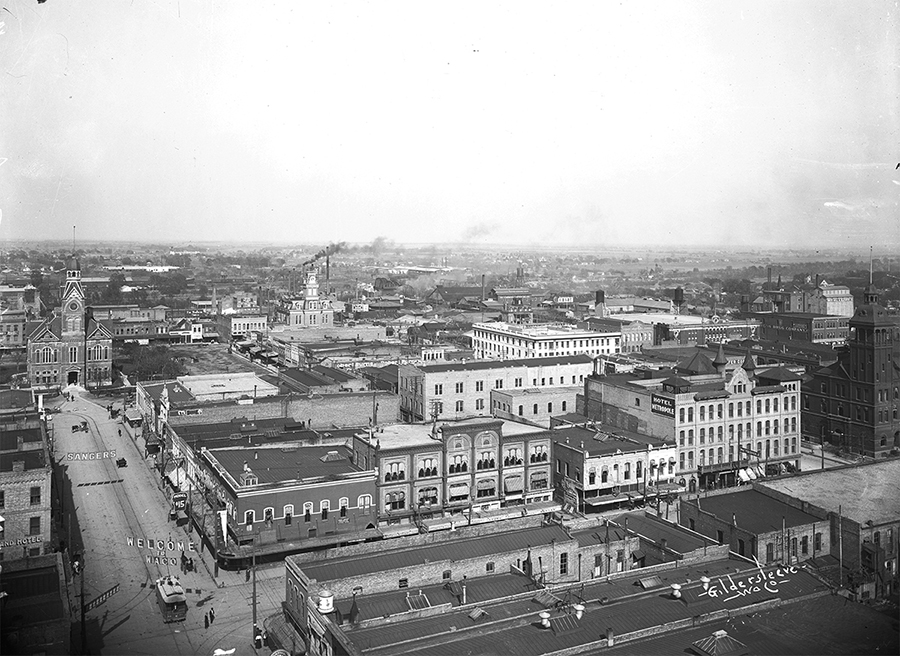
Meet Geoff Hunt, originally from High Wycombe, Buckinghamshire, England, and Audio and Visual Curator, in our latest staff post giving you a peek into the day-to-day work of The Texas Collection:
The Texas Collection has an estimated 1.4 million photo prints, negatives, slides, and digital image files. Additionally, we have thousands of moving image items, and the collection holds an equal number of sound recordings including interviews, music, and many other memorable events. My job as Audio and Visual Curator is to manage all of these materials.
Currently the photograph collection keeps my extremely helpful student photo assistants and me the busiest. Photographs are our most requested materials—lots of people need images, whether they’re looking for photos to use in publications, to supplement their research, or to decorate an office. My undergraduate student workers assist me in scanning, filing, and pulling photographs for projects and researchers. Our main goal is to serve the university and the general public with their needs.

How do we make such a large amount of images available for use? As with most libraries and archival facilities, you’ll get the most of your experience by visiting us in person. However, we are always working to make more photographs, as well as other materials, available online. The Texas Collection has thousands of photographs made accessible through Baylor’s Digital Collections site, which can be found in Texas Collection-Photos. Our Flickr page is another way for people to enjoy a small sampling of our large photographic collection.
Among our visual holdings, The Texas Collection is home to the archives of noted Central Texas photographers Fred Gildersleeve, Fred Marlar, and Jimmie Willis. However, these photographic materials, mostly dating from the early 1900s-1950s, primarily consist of negatives. The first priority in working with items such as these is preserving the original negatives and printed photographs as best as possible. We spend much time doing so by replacing old acidic sleeves and folders with ones that are acid-free and by using protective sleeves (Mylar) for the photo prints.

Some of the negatives are made of glass but most are cellulose; these can range in size from 16 millimeters to 8 x 10 inches. Glass is fragile, and cellulose deteriorates with age and climate. By reproducing these negatives and printed photos with specialized photo scanners, a digital “preservation file” and user access copy can be created. We do still keep the original negative and/or photo print—that’s the master copy!—but by digitizing items, we can allow access to the photo without endangering the original. People of today and future generations will be able to see this history of Baylor, Waco, various Texas cities, and many other locations for years to come. [Check out our Preservation Week video if you’re interested in learning how you can scan your own negatives.]
Scanning this variety of media and preserving the originals are what I spend the majority of my time doing. It is a very large collection to work with but I enjoy learning and finding something new and interesting everyday in our holdings. My position at The Texas Collection as Audio and Visual Curator is challenging but I sincerely find it to be “a labor of love.”
The Texas Collection turns 90 this year! But even though we’ve been at Baylor for so long, we realize people aren’t quite sure what goes on in a special collections library and archives. So over the course of 2013, we are featuring staff posts about our work at The Texas Collection. See other posts in the series here. (Read more about one student assistant’s work with the photography collection in our March post.)


















